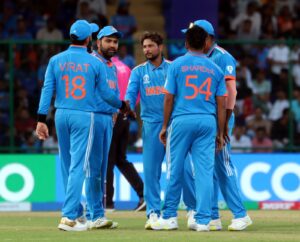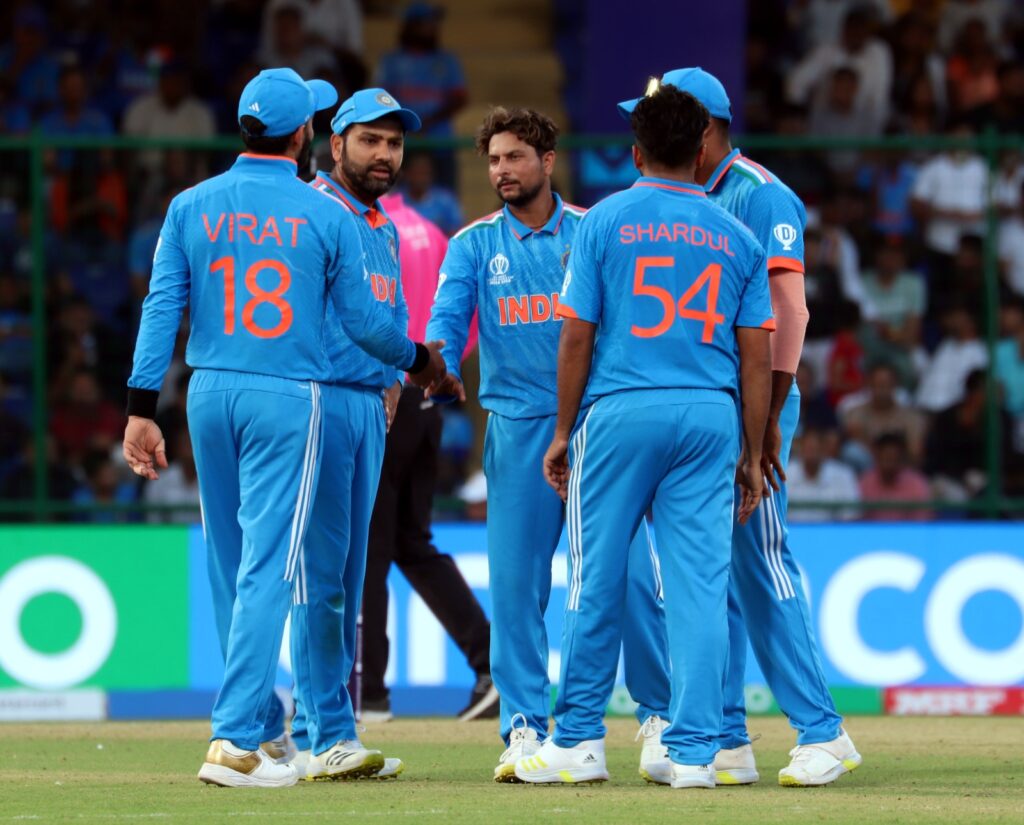
India’s World Cup campaign has got off to a smooth start. Australia and Pakistan among the three teams brushed aside means two good wins under the belt. Almost everyone to have held the bat has got runs. Shubman Gill, the lone exception, has played one match. On the bowling front, almost everything has clicked.
With changes in the batting ruled out barring fitness issues, ‘almost’ is a word hanging delicately over India’s bowling line-up. It tells you that most of the bowlers have done well. Not all. A glance through the stats shows that Shardul Thakur is yet to make a mark. The other quicks have done better.
This doesn’t make Shardul a bad choice overnight. But he has taken one wicket in two games. He has been used for just eight overs in all. Next on the list of least-used bowlers is Ravichandran Ashwin. He rolled his arm over for 10 overs against Australia, before making way for Shardul.
The team is winning and this question has not come up. But it’s a point worth pondering. Unless the surface has something extra for the quicker bowlers, two of Jasprit Bumrah, Mohammed Siraj and Mohammed Shami are enough, with Hardik Pandya as third seamer. Two spinners pick themselves. The flatter the pitch, the greater the importance of taking wickets, and one of Shardul or Ashwin should be chosen with this in mind.
Considering that the team management knows this, there are two possible explanations for picking the medium-pacer who can bat, ahead of the off-spinner, who can also bat. One, the captain, coach and others genuinely felt that Shardul’s bowling would be more effective than Ashwin’s on the flat decks of Delhi and Ahmedabad. Two, they want to keep both ready by rotating them in the first few games.
There is little to say about the second, but a few about the first point. With stray exceptions, the pitches for India’s last two games are by and large what the teams can expect over the next few weeks, with some natural wear and tear. Those strips in Delhi and Ahmedabad had nothing for the bowlers. On such pitches, is a proven wicket-taking spinner the better option, or someone who was not given the ball after two overs in the last match?
There is another possibility. Shardul is in because of his batting skills at No. 8. He can muscle the ball. If 10 runs are required off three, he would be the popular choice. But can’t a No. 8 also get the job done with rotation of strike and the odd big hit? And if the chances of that No. 8 taking wickets are higher based on sense of occasion, ability to adjust and everything else, then who should it be?
Sometimes, questions are not asked when the going is good. On the flip side, they don’t stop pouring in when one hits a roadblock. As the World Cup goes on, India’s think tank will give it some thought. A team with five batters and two genuine all-rounders should not bother about the strike rate of its No. 8. As long as conditions are not extreme and the difference in batting skills is not that stark, the better bowler of the two should play.
Don’t go by records. They are not stunning, and that’s why Ashwin was not selected for ODIs for close to five years. The 37-year-old was dramatically recalled because those who decided such things saw something in him. That can’t be his ability to contain. Ashwin is there because he is in a zone where he can outwit batters four times in an over. Someone who does that usually becomes an automatic choice.
As the Indian assortment prepares to turn itself into a juggernaut in the stages of the competition that matter, this Ashwin or Thakur subplot will thicken. The balance of attacking and defensive bowling resources is better not done with an eye on batting ability. Eventually, India will have to decide who has the better chance of taking wickets in these conditions.




